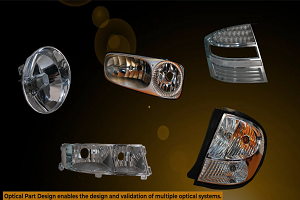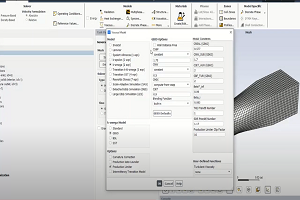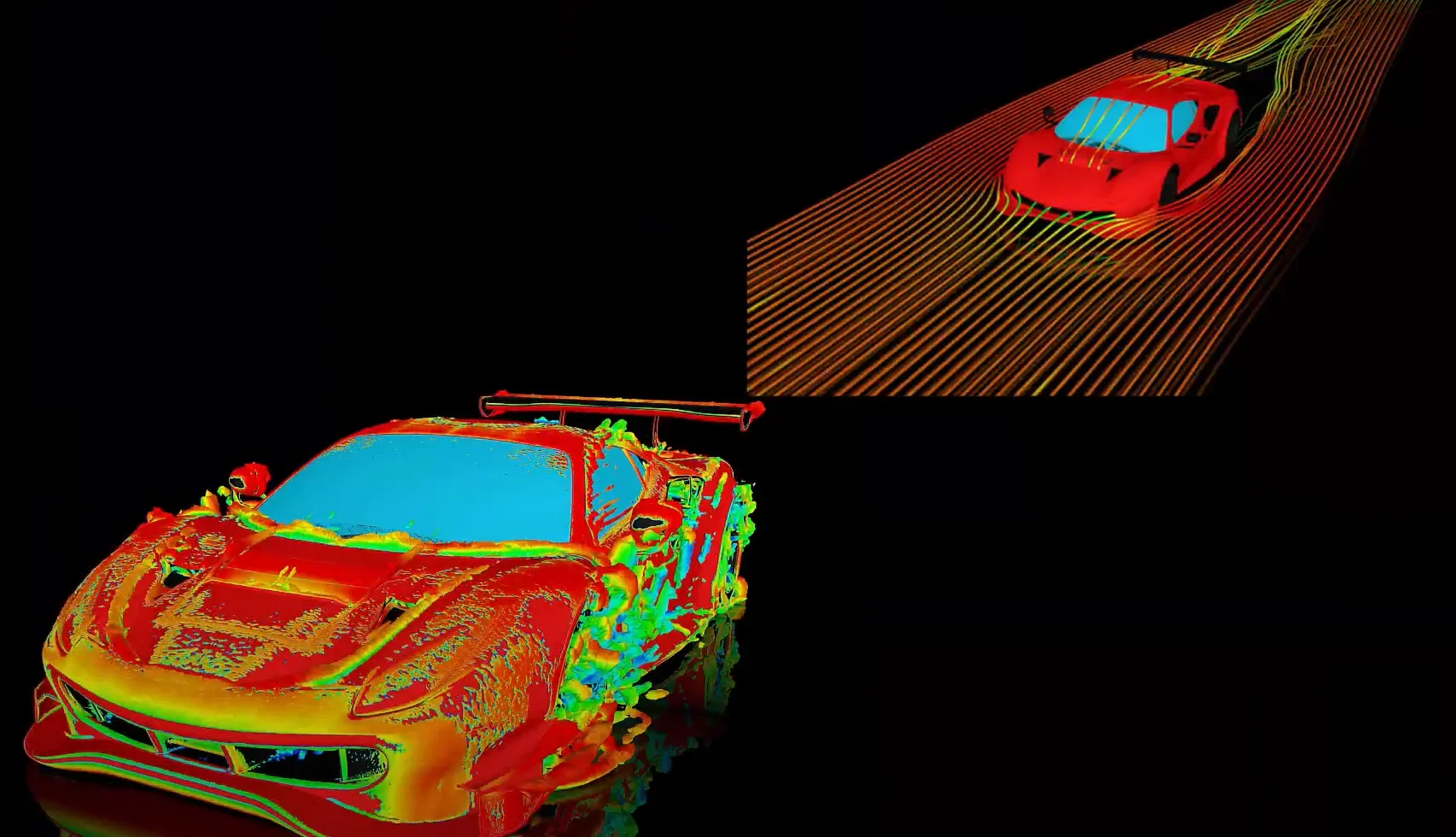What are the different ways to excite a base (with displacement or acceleration) in harmonic analysis? (MAPDL)
-
-
March 17, 2023 at 1:12 pm
 SolutionParticipant
SolutionParticipantIn the attached example, 3 methods are presented for a base excitation in a harmonic analysis – The Large Mass method: used for several years, the acceleration is replaced by a force applied to a large mass fixed to the base of the model. This mass is a lot heavier than the total mass of the structure (>10^3). To replace the A0 acceleration, an equivalent force F = ML*A0 is applied. – The Enforced Motion method: available since R13 for MSUP harmonic. This method create a loadvector in the modal basis which allow to apply an acceleration or a displacement – The Full harmonic method: more accurate but also more time consuming. The displacement (or the acceleration) is directly applied threw an imposed displacement (using D command) Nota : In harmonic, displacement and acceleration are linked by the following equation : A = w².U (w is the pulsation)
Attachments:
1. 2040083.pdf
2. 2040083.zip
-


Introducing Ansys Electronics Desktop on Ansys Cloud
The Watch & Learn video article provides an overview of cloud computing from Electronics Desktop and details the product licenses and subscriptions to ANSYS Cloud Service that are...

How to Create a Reflector for a Center High-Mounted Stop Lamp (CHMSL)
This video article demonstrates how to create a reflector for a center high-mounted stop lamp. Optical Part design in Ansys SPEOS enables the design and validation of multiple...

Introducing the GEKO Turbulence Model in Ansys Fluent
The GEKO (GEneralized K-Omega) turbulence model offers a flexible, robust, general-purpose approach to RANS turbulence modeling. Introducing 2 videos: Part 1 provides background information on the model and a...

Postprocessing on Ansys EnSight
This video demonstrates exporting data from Fluent in EnSight Case Gold format, and it reviews the basic postprocessing capabilities of EnSight.

- How to setup Initial, Minimum and Maximum time step in Transient analysis?
- In Workbench Mechanical, how can I obtain strain energy output for Modal analysis?
- How to define variable thickness shell elements in ANSYS Mechanical? Is there any verification example of the variable thickness shell modal analysis available?
- How to apply application-based settings to improve the performance and robustness of transient structural analyses?
- Why is damped frequency is lower than undamped frequency with viscous damping but larger with structural damping?
- In a random vibration analysis, what is “GRMS” and how can it be calculated?
- In the results of a modal analysis, how can I define that a frequency is an output parameter ?
- How to include effect of bolt pretension in a modal analysis?
- How can I specify acceleration at a node? Could I use the ‘big mass method’?
- Presentation on shock analysis using response spectrum and transient dynamics

© 2025 Copyright ANSYS, Inc. All rights reserved.

